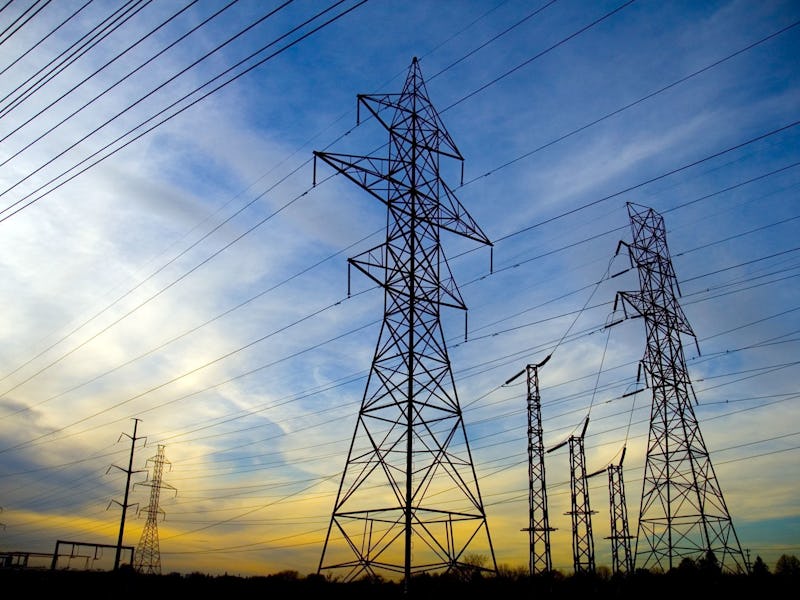The 15 Greenest Countries in the World
Solar and wind energies are becoming way cheaper, and these nations have taken notice.

There are 195 countries in the world, some of which are keen on kicking their fossil fuel habits and building renewable technologies. Then, there are countries that have little to no interest in developing green energy, but this might not be for a lack of desire: War-ravaged Iraq and resource-starved Somalia have bigger concerns.
Below are 15 countries that are doing a commendable job of using renewable energies. As wind and solar become cheaper, this isn’t just an environmental motivation – it’s a smart economic strategy for these countries as diverse as their locations, histories, climate, and people.
1. Finland
Finland ranked the highest in Yale University’s annual Environmental Performance Index (EPI), and an important reason why is that the country already produces around 35 percent of its energy from renewable sources, notably wind power. By 2050, the country plans for over half of its electricity to come from renewable sources.
2. Kenya
Indomitable tectonic forces are pulling Kenya apart. This place, the Great Rift Valley, allows Kenya to easily access the super-heated water boiled by Earth’s magma. Geothermal energy has exploded in Kenya over the last decade, and it now powers about half the nation.
3. The United States of America
Although the current administration is keen on fossil fuels, administrations are temporary and insignificant in the face of the insuperable economic tides of the richest and most powerful national in the world. Solar and wind energies continue to get cheaper, and coal has been in notable decline for two decades. Texas is leading the way in wind energy – if the state was its own country, it would be the fourth-largest wind-energy producing nation on Earth. On the solar frontier, in 2014, a solar-panel installation was completed on an American rooftop every two and a half minutes.
4. Iceland
Iceland may very well win the trophy for greenest country – should such an eco-friendly trophy exist: The country produces an impressive 100 percent of its energy from renewable energy sources. It produces most of its electricity from hydro-power, exploiting the abundant rains in its highlands. To warm its homes and water, Iceland draws its heat from the abundant, broiling magma that lies beneath the volcanic isle.
5. Sweden
In 2015, renewable energy powered over half of Sweden (57%), and the country has a good shot of getting to 100% by 2040. Wind, nuclear, and hydropower are its primary renewable sources, and the country is just beginning to exploit the turbulent winds that lie just off its shore.
6. Estonia
Estonia, long dependent on gas imports from Russia, kind of kicked its gas habit by agreeing to get its natural gas from Norway. But that’s not the end goal. Wind energy looms large in Estonia’s future. It’s plans to build a massive 1,000 megawatt off-shore windfarm in the Baltic Sea, composed of between 100 to 160 wind turbines.
7. The United Kingdom
In April 2017, for the first time since the Industrial Revolution, Britain went an entire day without burning any coal. The nation believes this will become an increasing trend as demand for the dirty, black rock falls and interest in cheaper renewables, like wind and hydropower, increase. Britain plans to close its last coal plant in 2025.
8. New Zealand
New Zealand hopes to almost entirely wean itself from fossil fuels by 2025 – a date that’s fast approaching. By then, it plans for 90 percent of its power to come from renewables, the greatest source of which is geothermal – which makes good sense, as New Zealand is a volcanic island. Already, 75 percent of the nation’s electricity comes from renewable sources.
9. Costa Rica
While coming in a not-too-impressive 42nd place in on the Yale EPI rankings, last year Costa Rica went over two straight months without using any fossil fuels to generate electricity. Sure, Costa Rica is a small country with less than five million people – but it’s still a notable accomplishment.
10. France
France is a pretty darn green country – unless you consider nuclear waste un-green. A whopping 75 percent of is electricity is derived from nuclear power plants, which emit water vapor from their cooling powers, and no carbon. The country, however, passed an energy transition law requiring that country substantially decrease its nuclear dependence (down to 50 percent) by 2025, which will require a large expansion in the country’s solar and wind capabilities.
11. Slovenia
Last year, a Dutch organization called Green Destinations labeled Slovenia the world’s “first green country”, and their reasons were many, including expansive car-free zones and an impressive recycling system. The nation still imports coal and oil, but in 2016 increased its hydro-electric production by nearly 20 percent.
12. Australia
This nation of 24 million has set some ambitious clean-energy goals. By 2020, the government expects that [nearly a fourth of Australia’s electricity will come from renewable sources], with wind, solar and hydroelectric all playing crucial roles.
13. Spain
The Spanish generate nearly half their energy from renewable sources, with wind looming large, at over 20 percent. Nearly a quarter of its energy comes from nuclear, which produces no carbon, and less than 10 percent comes from coal.
14. Denmark
Denmark is filled with wind turbines. Sometimes, when winds are especially strong, the turbines produce up to 140 percent of its electricity needs. When this happens, the country sends its clean energy to its neighbors, Norway, Germany, and Sweden.
15. Switzerland
The Swiss recycle nearly half of their waste – the most in the world. What’s more, hydropower from massive dams produce over half of the nation’s electricity.